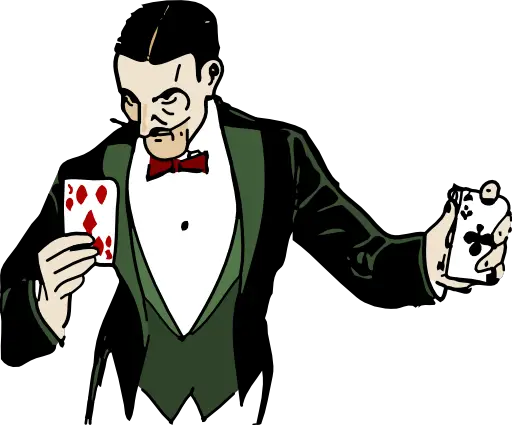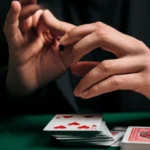Support our educational content for free when you purchase through links on our site. Learn more
What is the Science of Magic? Unveiling 12 Mind-Bending Secrets! 🪄
Have you ever watched a magician pull a rabbit out of a hat and wondered, “How on earth did they do that?” You’re not alone! The world of magic is filled with astonishing feats that seem to defy the laws of nature. But what if we told you that behind every jaw-dropping illusion lies a fascinating blend of psychology, neuroscience, and performance art? In this article, we dive deep into the science of magic, revealing 12 mind-bending secrets that will change the way you view magic forever.
Imagine sitting in a theater, the lights dimming as the magician takes the stage. With a flick of the wrist, a card appears from thin air, leaving the audience gasping in disbelief. But what if we told you that this moment of wonder is meticulously crafted using principles of misdirection and cognitive psychology? Stick around as we unravel the mysteries behind these captivating tricks and share tips on how you can become a magician yourself!
Key Takeaways
- Misdirection is crucial: It manipulates audience attention to create illusions.
- Sleight of hand: Mastering manual dexterity is essential for performing tricks.
- Psychological principles: Understanding how the brain perceives information enhances magical performances.
- Showmanship matters: Engaging storytelling and emotional connection amplify the magic experience.
- Practice and dedication: Becoming a magician requires continuous learning and skill refinement.
Ready to dive into the world of magic? 👉 Shop for magic supplies and tools to kickstart your journey:
- Magic Tricks: Amazon | Walmart | Magic Shop Official
- Sleight of Hand Tools: Amazon | Etsy | Magic Shop Official
Get ready to amaze yourself and others with the wonders of magic! ✨
Table of Contents
- Quick Tips and Facts
- The Enigmatic History of Magic: From Ancient Rituals to Modern Marvels
- The Power of Misdirection: A Key Element in the Science of Magic
- The Art of Sleight of Hand: Mastering Manual Dexterity in Magic
- The Science Behind Illusions: Optical and Cognitive Tricks Explained
- The Role of Props and Gadgets in Crafting Magical Experiences
- Psychology of Audience Perception: How Magic Plays with Your Mind
- The Art of Misbelief: Creating Suspense and Wonder in Magic
- Evolving Techniques: Exploring Modern Magic Phenomena
- Beyond the Tricks: The Showmanship and Performance in Magic
- Secrets Exposed: The Ethics of Magic and the Magician’s Code
- Learning the Craft: Your Journey to Becoming a Magician
- Conclusion
- Recommended Links
- FAQ
- Reference Links
Quick Tips and Facts
Want to amaze your friends with scientific magic tricks? Here are some quick tips to get you started:
- Practice Makes Perfect: Just like any skill, magic requires dedication and practice.
- Start Simple: Don’t try to tackle the most complex illusions right away. Begin with easier card tricks and gradually work your way up.
- Focus on Presentation: A well-presented trick is just as important as the trick itself. Work on your showmanship, storytelling, and audience interaction.
- Misdirection is Key: Learn how to subtly direct your audience’s attention away from the secret moves.
- Study the Greats: Watch and learn from professional magicians. Analyze their techniques and performance styles.
Fun Fact: Did you know that the term “magic” originates from the ancient Persian word maguš, meaning “to be able”? 🪄
Now, let’s delve deeper into the fascinating world of magic and explore the science behind it! 👇
The Enigmatic History of Magic: From Ancient Rituals to Modern Marvels
Magic has captivated humanity for millennia, weaving its way through cultures and civilizations across the globe. From ancient rituals to modern stage illusions, the allure of the impossible has left an undeniable mark on human history.
Ancient Roots and Ritualistic Practices
In ancient times, magic was often intertwined with religion and spirituality. Shamans and priests wielded mystical powers, invoking spirits and deities to influence the natural world.
- Ancient Egypt: Magic, known as heka, was an integral part of Egyptian life. It was believed to be a fundamental force in the universe, and magicians played a significant role in religious ceremonies and everyday affairs.
- Ancient Greece and Rome: While magic was often viewed with suspicion, oracles and seers were consulted for guidance, and magical practices were employed for various purposes, from healing to love spells.
The Evolution of Magic: From Mysticism to Entertainment
Over time, magic gradually shifted from its mystical and religious roots towards entertainment and performance.
- Medieval Period: Traveling entertainers and conjurers performed feats of illusion and sleight of hand, captivating audiences with their seemingly impossible skills.
- Renaissance and Enlightenment: The rise of science and reason led to a decline in the belief in traditional magic. However, this era also saw the emergence of new forms of illusionism and stage magic.
Modern Magic: A Fusion of Art and Science
Today, magic has evolved into a sophisticated art form that combines skillful deception, psychology, and showmanship. Modern magicians continue to push the boundaries of illusion, captivating audiences worldwide with their mind-bending performances.
Intrigued by the history of magic? Explore the evolution of magical practices and the fascinating figures who shaped this captivating art form.
The Power of Misdirection: A Key Element in the Science of Magic
Misdirection is the magician’s secret weapon, the art of subtly manipulating your attention to make the impossible seem possible. It’s the reason you see what you think you see, not necessarily what’s actually happening.
The Psychology of Misdirection: How Magicians Hack Your Brain 🧠
Misdirection exploits the natural limitations of human perception and attention. Our brains are constantly bombarded with sensory information, and we can only focus on a small fraction of it at any given time. Magicians use this to their advantage, directing your attention away from the “method” while highlighting the “effect.”
Types of Misdirection:
- Visual Misdirection: Using movement, gestures, and bright colors to draw your eyes to a specific point while something else happens unnoticed.
- Verbal Misdirection: Employing carefully chosen words, pauses, and changes in tone to shift your focus.
- Psychological Misdirection: Exploiting your expectations, assumptions, and cognitive biases to influence what you perceive.
Mastering Misdirection: Tips from the Mind Trick™ Experts
- Timing is Everything: Execute secret moves when the audience is distracted or looking elsewhere.
- Natural Movements: Make your misdirection appear seamless and effortless, blending it into your natural performance style.
- Practice Makes Perfect: Mastering misdirection takes time and dedication. Practice your techniques until they become second nature.
Want to learn more about the psychology of magic and how it influences your perceptions? Check out our articles on Magic Psychology.
The Art of Sleight of Hand: Mastering Manual Dexterity in Magic
Sleight of hand is the foundation of countless magic tricks, requiring incredible dexterity, precision, and years of practice. It’s the ability to make objects appear, disappear, or change places right before your very eyes.
Essential Sleight of Hand Techniques:
- The French Drop: A classic vanish where a coin seemingly disappears from your hand.
- The Palm: Secretly holding an object in the palm of your hand while making it appear empty.
- The Double Lift: Secretly lifting two cards from the deck as one, creating the illusion of selecting a single card.
Developing Your Sleight of Hand Skills:
- Start Slow: Practice each move slowly and deliberately, focusing on precision and fluidity.
- Use a Mirror: Practice in front of a mirror to identify any unnatural movements or tells.
- Seek Guidance: Learn from experienced magicians or instructional videos to refine your technique.
Ready to master the art of sleight of hand? Explore our resources on Coin and Money Tricks and elevate your magic game!
Conclusion
In our exploration of the science of magic, we’ve uncovered the intricate layers that make this art form so captivating. From the power of misdirection to the mastery of sleight of hand, each element plays a crucial role in creating illusions that defy belief. We’ve seen how psychology, optical tricks, and showmanship come together to create unforgettable experiences for audiences.
As you embark on your journey into the world of magic, remember that practice, patience, and creativity are your best allies. Whether you’re looking to impress friends with simple tricks or aspire to become a professional magician, the principles we’ve discussed will serve you well.
Key Takeaways:
- Misdirection is essential for captivating your audience.
- Sleight of hand requires dedication and practice to master.
- Understanding the psychology of perception can enhance your performance.
So, are you ready to dazzle your audience? Grab your props, practice those sleights, and let the magic unfold! ✨
Recommended Links
-
Books on Magic:
-
👉 Shop Magic Supplies:
- Magic Tricks: Amazon | Walmart | Magic Shop Official
- Sleight of Hand Tools: Amazon | Etsy | Magic Shop Official
FAQ
What is the science behind magic?
Magic combines various disciplines, including psychology, neuroscience, and performance art. It relies on principles of perception, attention, and cognitive biases to create illusions that deceive the audience’s senses. By understanding how the brain processes information, magicians can craft tricks that exploit these mechanisms.
Read more about “10 Mind-Blowing Magic Tricks with Numbers That Will Leave You Speechless! 🎩✨ …”
What is the scientific study of magic called?
The scientific study of magic often falls under the umbrella of psychology and cognitive science. Researchers investigate how magic tricks manipulate perception and attention, exploring the cognitive processes that lead to the experience of wonder and disbelief.
What is the scientific definition of magic?
In a scientific context, magic can be defined as a series of techniques and principles designed to create illusions that deceive the audience. This involves understanding human perception, attention, and the psychological effects of surprise and misdirection.
What is the logic behind magic?
The logic behind magic lies in the understanding of human psychology and perception. Magicians use techniques such as misdirection, sleight of hand, and audience engagement to create a narrative that leads viewers to believe in the impossible. By manipulating expectations and exploiting cognitive biases, magicians craft experiences that challenge the audience’s understanding of reality.
Read more about “15 Mind-Blowing Scientific Magic Tricks You Can Do at Home! 🎩✨ …”
How do magicians create suspense and wonder?
Magicians create suspense and wonder through storytelling, pacing, and emotional engagement. By building anticipation and delivering unexpected outcomes, they captivate audiences and evoke feelings of amazement and curiosity.
Read more about “How to Do a Science Trick? 10 Mind-Blowing Experiments to Amaze Your Friends! 🎩✨”
What skills are essential for becoming a magician?
Key skills for aspiring magicians include sleight of hand, misdirection, showmanship, creativity, and a deep understanding of human psychology. Continuous practice and learning are crucial for mastering these skills.
Reference Links
- Magic (supernatural) – Wikipedia
- Psychology of Magic – American Psychological Association
- The Science of Magic – Scientific American
- History of Magic – History.com
Explore the fascinating world of magic and discover how it intertwines with science, psychology, and performance art! 🪄✨






